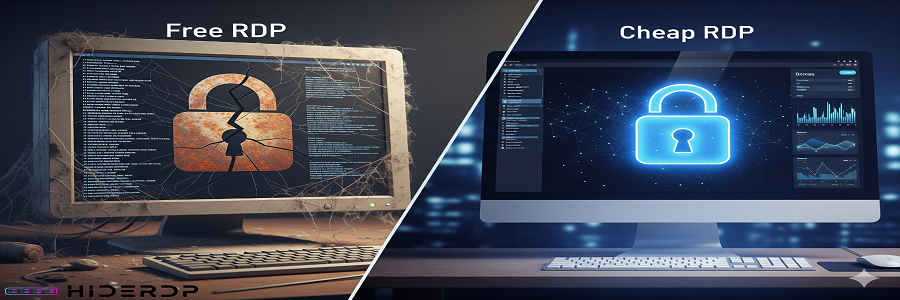In the quest for remote computing power, many users face a fundamental decision: opt for a cheap RDP vs. free RDP?
While the appeal of “free” is undeniably strong, understanding the crucial differences between these two options is paramount. This content will help you navigate this choice, ensuring you pick the right solution for your needs.
The Allure of Free RDP
The idea of getting a powerful remote desktop without spending a dime is, naturally, very attractive.
The allure of free RDP primarily stems from the promise of cost-free access to a Windows operating system, often advertised with features that seem too good to be true.
For students, hobbyists, or those needing a quick, temporary solution, the allure of free RDP can be irresistible.
It seems like a perfect way to run a small script, test a piece of software, or simply get a feel for how an RDP works without any financial commitment.
This seemingly zero-cost entry point makes it appear ideal for non-critical tasks or short-term experiments.
The Reality of Free RDP
However, the saying “you get what you pay for” rarely rings truer than when discussing cheap RDP vs. free RDP. The reality of free RDP is often a stark contrast to its initial appeal.
These services typically suffer from severe limitations and potential risks.
- Abysmal Performance: Free RDP servers are usually overloaded with users, leading to extremely slow speeds, frequent disconnections, and unresponsive interfaces. Tasks that should take minutes can drag on for hours, making productivity nearly impossible.
- Limited Resources: Expect minimal CPU, RAM, and storage. These resources are often shared among many users, leading to constant bottlenecks.
- Unreliable Uptime: Free services often lack proper maintenance and infrastructure, resulting in frequent downtimes without warning, interrupting your work or projects.
- Security Risks: This is perhaps the most significant concern. Free RDP providers may not implement adequate security measures, leaving your data vulnerable to breaches, malware, and even surveillance. Some services might actively collect your data or inject ads.
- No Support: Don’t expect any customer service. When issues arise, you’re usually on your own.
Understanding the reality of free RDP helps underscore why investing in a low-cost, reliable alternative is often the smarter choice in the cheap RDP vs. free RDP debate.

When to Use a Free RDP
Despite its many drawbacks, there are very limited scenarios when to use a free RDP. These situations generally involve non-critical, short-term tasks where data security and performance are not a priority:
- Basic Testing: If you need to quickly test a public website’s loading speed from a different geographic location.
- Learning Environment: For someone completely new to RDP and wanting to understand the very basic connection process without installing anything on their machine.
- Disposable Tasks: If you need to perform a task that doesn’t involve any personal data, requires minimal processing power, and is entirely inconsequential if the server goes offline or is compromised.
Beyond these very specific and low-stakes uses, the benefits of even a very cheap RDP far outweigh the perceived cost savings of a free service.
The enhanced performance, reliability, and security offered by a paid option provide a much more stable and trustworthy environment for almost any remote computing need.

